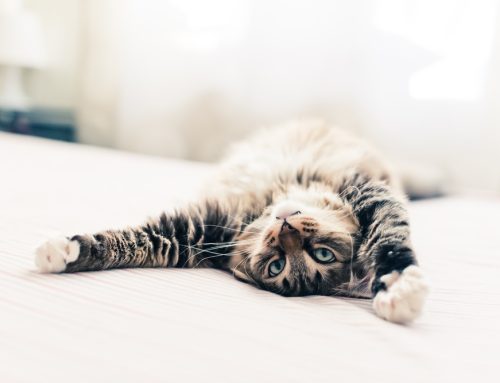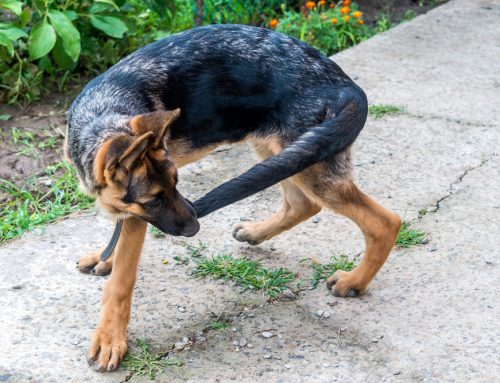Dental disease is one of the most common conditions in all pets older than 3 years of age, and because pets are skilled at masking their pain, their issues can go undiagnosed until the disease is severe. February is National Pet Dental Health Month, and our Fremont Animal Hospital team has the information you need to care for your pet’s oral health and protect them from dental-related health conditions.
Dental disease in pets
Shortly after your pet eats, oral bacteria deposit a sticky film—plaque—on your furry pal’s teeth, causing dental disease. Unless you regularly brush off plaque from your pet’s teeth, the substance begins to harden into cement-like tartar within 24 hours. Oral bacteria can damage a tooth’s supporting structures, resulting in pain, infection, inflammation, and ultimately bone and tooth loss. Left untreated, dental disease can affect your pet’s entire body if bacteria leak into their bloodstream and attack their kidneys, heart, and other organs. Gingivitis (i.e., inflamed gums) is often pets’ first dental disease sign, along with tartar buildup and bad breath. Pets’ dental disease signs can also include:
- Brown or yellow tartar buildup on the teeth
- Red, swollen gums
- Broken or loose teeth
- Excessive drooling
- Decreased appetite
- Swallowing food whole, rather than chewing
- Leaving broken crumbs around their bowl after eating
- Taking food from their bowl and eating elsewhere
- Blood in their water bowl or on their toys
- Shying away from being touched near their face
If your pet exhibits any of these signs, schedule a dental evaluation with our Fremont Animal Hospital veterinary team, so we can assess their oral health. Fortunately, dental disease is preventable. To help your pet achieve and maintain optimal dental health, employ these five dental must-haves:
#1: Pet-friendly toothbrush
Create an at-home dental care routine to keep your pet’s teeth and mouth clean, and their breath fresh while preventing dental disease. Daily toothbrushing prevents or slows dental disease progression, and is the best way to remove plaque from your pet’s teeth before the substance hardens into tartar. Ensure your pet’s toothbrush is small and has extra-soft bristles. For cats and small-breed dogs, a good option is a toothbrush that fits over your fingertip.
#2: Pet-specific toothpaste
When brushing your pet’s teeth, avoid using human toothpaste, which can contain toxic ingredients, such as fluoride and xylitol, that—if swallowed—can harm your pet. Pet-specific toothpaste is safe and is available in a variety of tasty flavors such as peanut butter, poultry, beef, and seafood. To make the toothbrushing process more enjoyable, choose your pet’s preferred flavor.
#3: Pet-friendly dental chews
Dental chews can help reduce plaque buildup, but not all chews are safe to give your pet. Bones, antlers, and hooves are extremely hard and can crack your pet’s teeth. In addition, these products can splinter into small shards, injuring your pet’s mouth and tongue, or piercing their gastrointestinal (GI) tract. Look for pet dental products that carry the Veterinary Oral Health Council (VOHC) Registered Seal, which guarantees a product has been proven to slow plaque and tartar accumulation, ensuring the item will safely improve your pet’s oral health.
#4: Prescription dental pet food or water additives
If your pet eats regular adult pet food, consider switching to a prescription dental diet. These diets’ kibble pieces are generally larger, with an airy, fibrous texture that breaks up easily so that the kibble edges scrub away plaque and tartar. Water additives help reduce the bacterial load in your pet’s mouth, which is the main cause of dental disease. Food additives are generally in powder form, and their enzymes gently scrub away plaque. These additives can help reduce your pet’s bad breath, and plaque and tartar accumulation.
#5: Regular veterinary professional dental cleanings

Oral bacteria continuously deposit plaque on your pet’s teeth, and if not brushed off regularly, quickly hardens to cement-like tartar. Brushing removes plaque, but cannot remove tartar—only a professional cleaning can accomplish this. Most pets should have a professional dental cleaning at least once per year. Some pets may require more frequent cleanings, especially small and brachycephalic (i.e., flat-faced) breeds, older pets, and those who have been experiencing dental issues. Professional teeth cleaning includes:
- Scaling tartar from each tooth surface—above and below the gumline
- Polishing each tooth to prevent bacteria from adhering
- Probing the gumline for pockets, which indicate periodontal disease
- Irrigating below the gumline to flush away bacteria and debris
- Rinsing the entire mouth with an antimicrobial solution
To celebrate National Pet Dental Health Month, polish up your pet’s dental care routine. Schedule your pet’s oral health assessment and professional dental cleaning with our Fremont Animal Hospital team.






















Leave A Comment